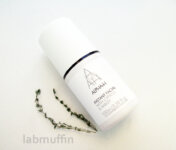Here’s a pet peeve of mine: SPF drops and boosters. Fellow skincare fanatic Hannah (@ms_hannah_e on Instagram) reminded me about them recently, right when I was in a ranty mood, so it fit right in.

What Are SPF Sunscreen Drops?
SPF Sunscreen Drops are products that you’re supposed to mix into other products to “turn them into sunscreens”. Some examples are:
- Dr Barbara Sturm Sun Drops SPF 50: $145 USD for 30 mL
- Coola Full Spectrum 360° Sun Silk Drops SPF 30: $46 USD for 30 mL
- (and to a lesser extent) Dermalogica Solar Defense Booster SPF 50: $48 USD for 50 mL
Why would you use these? Sunscreens often have horrible textures, so why not turn a product you already like into a sunscreen by adding some sunscreen drops into it? Not so fast…this ain’t a rant post for nothing.
Why I Hate Sunscreen Drops
Reason 1: They don’t deliver the protection they suggest
See that SPF number? It looks nice and high… but that’s the protection you’ll get if you apply the undiluted product directly on your skin like a regular sunscreen, with 2 mg of product applied per square centimetre of skin. On my face, that translates to about 3/4 of a quarter teaspoon.
So let’s work out the SPF protection if these sunscreen drops are used as intended.
- Studies have found that most people only apply half to one-fifth of the amount of sunscreen they should apply, even when they’re told to apply it generously. If they’re applying a non-sunscreen product, we can expect that they’re probably going to apply even less.
- SPF also scales approximately linearly with the amount you apply. For example, applying half of the ideal amount will give you around around half of the SPF protection.
Related post: Chemical vs Physical Sunscreens: The Science (with video)
So as an estimate, for my 381 cm2 face:
- If the drops are mixed in equal proportions with a product, and half the proper sunscreen amount is applied: ¼ of the labelled SPF = SPF 7.5 for SPF 30 drops, SPF 12.5 for SPF 50 drops
- “A few” drops mixed into a product (3 drops at 0.05 mL = 0.15 mL = 0.15 g = 0.39 mg/cm2): 0.195 (around ⅕) of the labelled SPF = SPF 5.85 for SPF 30 drops, SPF 9.75 for SPF 50 drops
Related post: What Does SPF Mean? The Science of Sunscreen
These SPF values are very low – so low that Australia’s Therapeutic Goods Administration wouldn’t let them say that they can help prevent skin cancer.
(While the products say that you can use them without mixing for maximum sunscreen protection, the marketing and dropper packaging encourages using a small amount mixed into a different product. Dermalogica is the best of the three – they say to use Solar Defense Booster on its own or mixed in equal parts with another product, but both Dr Sturm and Coola encourage the use of “a few drops” or “several drops”.)
Related post: Video: All Your Sunscreen and Make-up Questions Answered
But it’s better than nothing, right?
Um… not necessarily. Studies have found that people stay in the sun longer if they think they’re protected with a sunscreening product, and end up with more sun damage overall.
Reason 2: They’ll Give Patchy Protection
Another issue with these – sunscreen protection isn’t just about the amount of active ingredients. It’s about a ton more: how the active ingredients are distributed in the sunscreen, the “inactive” ingredients, how the different ingredients interact with each other, how the sunscreen applies on the skin, how it dries on the skin, and so on. Sunscreen is one of the most difficult products to formulate because changing almost any small thing will change the final SPF measured when tested.
One of the big factors that affects protection is whether or not a sunscreen forms a continuous film that spreads the ingredients evenly across your skin. Even with the same amount of sunscreening ingredients, products will deliver different protection if they spread differently.
Related post: Why Do I Need to Apply Sunscreen Before Sun Exposure?
That’s the big problem with essentially DIY-ing a sunscreen with these drops, as I’ve discussed before in my DIY sunscreen video. There’s no guarantee that the sunscreen drops will be mixed into the other product evenly. Since I’m guessing no one is spending more than a few seconds mixing their products together, it most likely won’t be even, meaning it’ll give patchy protection that’s probably thinner in spots.
But honestly, it probably won’t be much of an issue since the protection they’re giving is so low anyway.
(I have a theory that Dr Sturm’s Sun Drops are her secret ploy to trick people into not using sunscreen, since she “almost never” wears sunscreen and thinks it’s unnecessary. )

References
This post contains affiliate links – if you decide to click through and support Lab Muffin financially (at no extra cost to you), thank you! For more information, see Disclosure Policy.






Oooh, yaaaassss preachhh! ??
I’d take a zombie like grey cast on my face from an actual sunscreen than do spf “drops” or whatever the heck this is.
Also the best convos happen with our best skincare bloggers – love both, Hannah and you! 🙂 xx
The way we think about sun exposure changes rapidly over time. Just in my lifetime, we’ve gone from roasting in the sun coated t baby oil to fake tans and using sunscreens. It won’t be long before future people look back on us and our (still) cavalier attitudes toward sun protection in amazement, and they’ll be appalled.
I have really beautiful skin (I work hard at it!), but often wonder what I’d look like had I never sunbathed nor smoked. If it’s amazing now, what would it look like without my having tortured it?
I’ll bet people in the future will look young and sexy at 70. Waaaah. That won’t, however, be thanks to “sunscreen drops.”
My father, luckily for me, was a pharmacist, so we always wore sunscreen. Even when my girlfriends had baby oil slathered on in the Australian sun. That, and genetics (I am ethnic Chinese) mean I have very little sun damage luckily, even though I am almost 50, which is just as well as now, as a cyclist, I spend a lot of time in the sun
Thank you for ranting about these products! You’ve saved people hundreds of dollars in product as well as future skin damage. The beauty space is filled with so many products hyped by so many influencers…. you never know who’s really being honest. Great work. Keep it up!
Thank you for this post! I really don’t think this kind of products should be allowed to sell as a legitimate sunscreen!
Yup, I think you got it right for Dr Sturm’s ploy. I don’t trust this woman!
Thank you for your (always) very smart blog post!
Dr Sturm doesn´t deem it necessary to wear sunscreen on a regular? She must be living mostly indoors, it seems.
Good information! An excellent rant. Thankfully, from multiple sources, such as yourself, I already know better than to mix anything into my sunscreen. 🙂 Drops seems like they’d be easy to apply though. Meh, I don’t need to spend that much money however to get a good SPF lotion. Not sold on it. LOL.
What I wonder, is how good these new products are that are coming out. There are SPF powders now (well, more options now), and even setting or refreshing sprays. Which, is AWESOME in my books. But just how effective are they, I’m curious. I wear makeup and definitely would love a product that I can put on top of my makeup later in the day, after my original SPF lotion has worn off. And without having to re-do any of my makeup!
I use a physical sunscreen (Titanium dioxide and zinc oxide) lotion after my skincare in the morning under makeup. To replenish, I use ColorScience SPF 50 powder (also same ingredients) applied liberally several times a day (I have oily skin so no drying effect of powder application, but you have to find one with a good skin tone match and one that works with your foundation, if you wear it just like with lotions underneath). In this respect, it has increased my use of sunscreen so that I’m more compliant. I am also indoors most of the time, so the exposure I have is the UV that comes through the windows (still damaging). Of course, I won’t know for years if it’s really effective – the down side. I’ve tried refreshing sprays – I think you’d need to really coat your skin with them, Michelle can weigh in on how much would be needed) and that might mess up makeup. I ended up being sensitive to the ingredients in the one brand of mist I tried.
What do you think about mixing together two mineral sunscreens, and applying them at the same time?
Same thing applies – it’ll change the film formation.
Michelle, this is what concerns me about my sunscreen usage: I apply my physical sunscreen (Cerave) and allow it to “set,” and then I apply my foundation with a disposable sponge. Haven’t I mooshed my sunscreen around, perhaps leaving bald spots that are now unprotected? I never see this addressed; I only see exhortations to wear sunscreen. And on top of possible “moshing,” maybe the ingredients in my foundation are changing the film formation?
Am I worrying for nothing, or do. Have a point? And if I have a point, there isn’t really a good solution, is there? (Though I try not to go go upside until after the sun sets, like a vampire, there are times when going outside in the sun can’t be avoided.)
Would love to hear your thoughts on foundation on top of sunscreen.